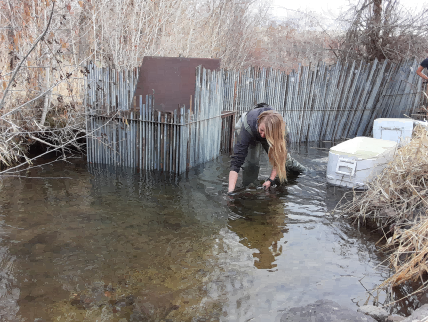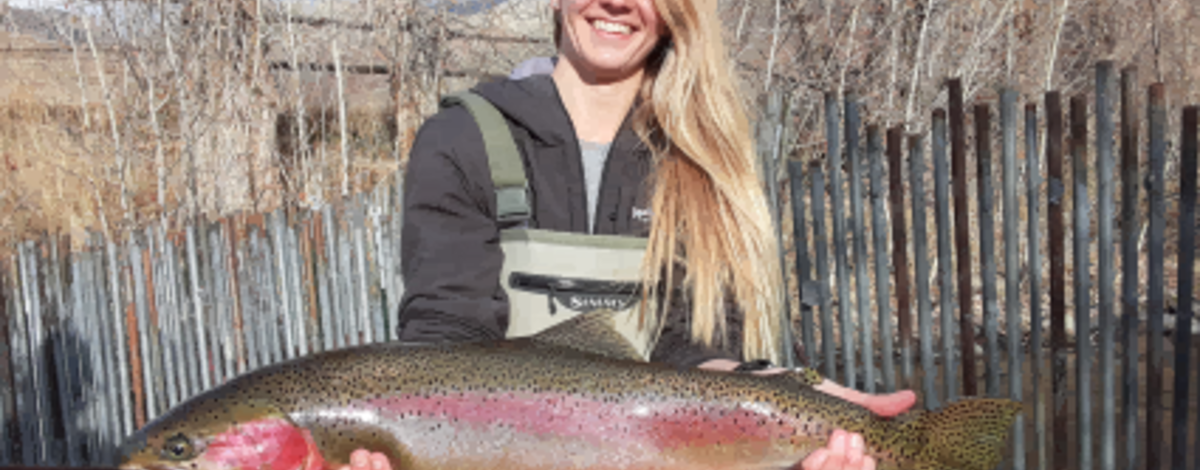Each spring, steelhead move from the Salmon River into tributaries to spawn as they have done since long before Lewis and Clark first came through the area in 1805. A lot has changed since then, but steelhead are still returning to the upper Salmon River and its tributaries to spawn.
In 2007, IDFG began operating picket weirs and traps on multiple tributaries of the Salmon River to document the number of steelhead that enter certain tributaries to spawn.

A fish weir is simply an obstruction placed in the tributary to prevent upstream passage of the fish and direct the fish into a trap where IDFG can then gather information such as length, weight, sex, origin (i.e., hatchery or wild), and other data on the fish (Click here to learn more about fish weirs).

Following data collection, the fish is released so it can continue upstream to spawn. The information collected is then used to evaluate ongoing habitat restoration projects and guide future management decisions. Similar to counts over Granite Dam and across Idaho, steelhead numbers returning to the upper Salmon River basin were below average this year. However, it wasn’t too many years ago that tributaries like Iron Creek and Poison Creek didn’t even connect to the Salmon River. Both streams are located between Salmon and Challis.
Iron Creek was re-connected in 2010 and Poison was reconnected in 2014. With the tributaries again connected to the Salmon River, we are seeing a response, as evidenced by the big wild steelhead in the picture above. Habitat improvements and monitoring are leading to an increase in knowledge about wild steelhead and their ability to persist through difficult conditions.
Read the latest news and information about wild fish in Idaho on our Wild Salmon and Steelhead pages at https://idfg.idaho.gov/fish/wild.

